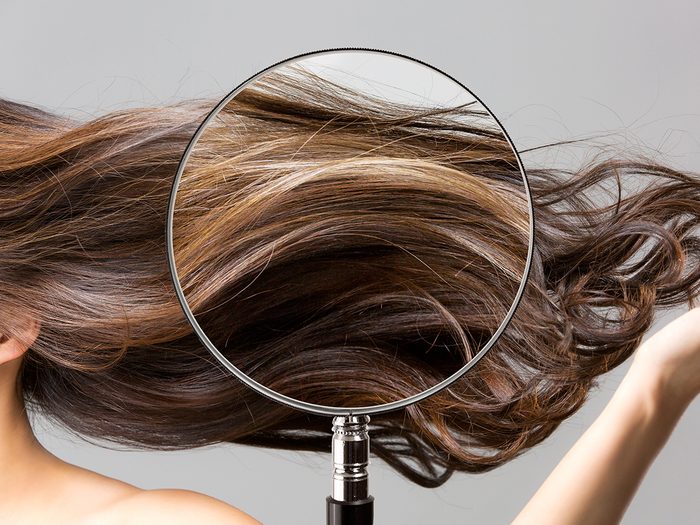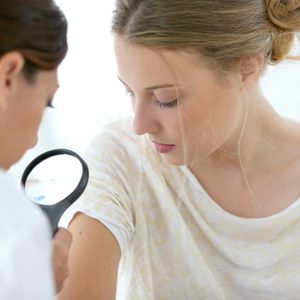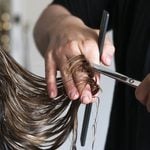What Your Hair Colour Reveals About Your Health

Your hair colour can provide important clues about your overall health, from vitamin deficiencies to your cancer risk.
If you’re a light blond or redhead
We’ll be blunt: light blonds and redheads have a higher risk of developing skin cancer. This is problematic because of the skin cancer itself, but also because light blonds and redheads tend to have a lower pain tolerance. “They will have a more difficult time when it comes to pain from laser procedures used to reverse sun damage and pre-cancerous lesions,” explains Dr. Dusan Sajic, a board-certified dermatologist in the United States and Canada who also earned his PhD in molecular immunology virology and inflammation. “This is especially true for a procedure called photodynamic therapy,” Dr. Sajic explains. “Not only is it more painful for these individuals, but it will also lead to much more of a severe reaction.”
Bottom line? Wear sunscreen every day (yes, even in the winter) and follow the Skin Cancer Foundation’s skin cancer prevention tips, such as covering up with UPF clothing, seeking shade during midday, and seeing your dermatologist for regular skin exams.
In addition, a study showed a correlation between decreased pigmentation in hair and an increased risk of Parkinson’s disease. This applies to both redheads and blonds with lighter hair. “People with lighter hair colour have a higher chance of developing Parkinson’s disease,” Dr. Sajic says, “but more studies are needed. In the meantime, report any neurological problems to your doctor as early detection is key.”
Good news for redheads!
There is some good news for redheads. “A Finnish study showed redheads have a lower risk of prostate cancer,” says Dr. Carmen Castilla, a New York City-based, board-certified dermatologist. “However the precise reason for this benefit is unknown.”
If your hair turned grey prematurely
First, let’s get clear of what “premature” means in this context. If your hair goes grey before you’re 30 (if you’re Black) or before you’re 20 (if you’re white), that is considered a premature loss of pigment. You may feel too young to have grey hair in your forties, but that’s a typical time for it to start transitioning.
“Genetics play a large role in when your hair turns grey,” explains Dr. Castilla. “However, premature grey hair can have underlying metabolic causes. Both B12 deficiency and thyroid dysfunction can cause premature grey hair.”
Dr. Reid Maclellan, Adjunct Professor of Plastic Surgery at both Harvard Medical School and Boston Children’s Hospital, points to the research. “When you start greying young, it could possibly mean there are certain health issues associated with the greying, like a B12 deficiency, thyroid disease, vitiligo, and alopecia areata.” Dr. Maclellan says, “If you’re noticing greying at a young age, it’s worth seeing a dermatologist, hair specialist, or another certified expert if it’s of concern.”
Another thing is if your hair goes white or grey when you’re young, but it’s restricted to a streak. “If the white hair is in a streak on their forehead, they have a higher chance of neurological disorders and should talk to their doctor about this,” Dr. Sajic says. A “white forelock” is technically known as poliosis, and includes white eyebrows and eyelashes.
Brunettes
For brunettes, hair loss is a problem to look out for. According to Cleveland Clinic, hair loss isn’t just for men, and “50 per cent of women will experience noticeable hair loss.” Brunettes are more likely to show signs of baldness both because of genetics and because sparse patches are more noticeable with darker hair. Cleveland Clinic recommends increasing iron through iron-rich foods such as spinach, broccoli, peas, tofu and iron-rich meats like beef, lamb, and oats.
Dyed hair colour
Because dyed hair can be any colour, we can’t generalize about conditions that could be connected to a hair colour that’s not your own. That said, those who dye their hair are at a greater risk of developing cancer, and if you dye your hair darker shades of brown or black you might want to think again.
“While there are many non-toxic hair dyes on the market, there are other hair dyes that contain chemicals and possible carcinogens in their formulations,” explains Dr. Maclellan. “Lifestyle choices including certain hair dyes in studies have been linked to a greater chance of developing Non-Hodgkin’s lymphoma (NHL). People with a family history of NHL should pay extra attention to this. People who use darker hair dye, especially over time, could run the increased risk of developing NHL since there’s a higher amount of chemicals used to turn hair darker.”
Those who bleach their hair to achieve a lighter shade may not have the same genetic risks that blonds and redheads have, but there are risks associated with repeated use of hydrogen peroxide and other bleaching agents.
Next, discover the sneaky reasons your hair is falling out.






